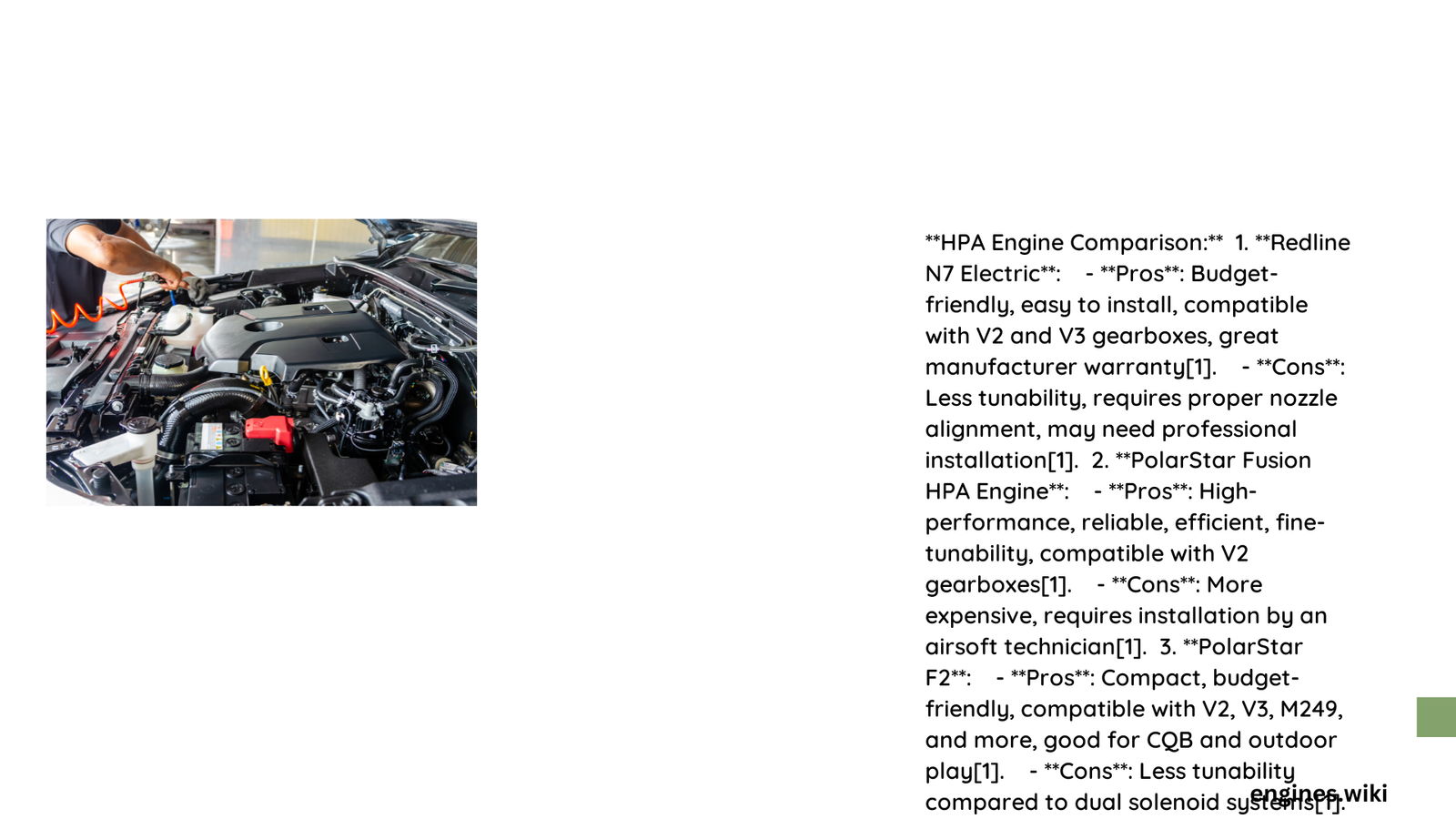High-performance air (HPA) engines represent a critical technological frontier in automotive engineering, offering enthusiasts and professionals a nuanced understanding of power, efficiency, and mechanical optimization. This comprehensive analysis delves deep into the intricate world of HPA engine comparisons, examining critical parameters that define modern automotive performance, from horsepower gains to long-term reliability and economic considerations.
What Makes HPA Engines Unique?
High-performance air engines distinguish themselves through advanced engineering techniques that maximize airflow, combustion efficiency, and overall mechanical performance. Unlike standard configurations, HPA engines leverage sophisticated design principles to extract maximum potential from automotive powertrains.
Key Performance Metrics Comparison
| Performance Parameter | Stock Engine | HPA Engine | Improvement Percentage |
|---|---|---|---|
| Horsepower | 180-220 HP | 220-280 HP | 15-27% |
| Torque | 180-220 lb-ft | 230-280 lb-ft | 20-30% |
| Acceleration (0-60 mph) | 7.5-8.5 sec | 6.2-7.3 sec | 10-15% |
How Do HPA Engines Enhance Power Output?

HPA engines optimize power generation through multiple sophisticated mechanisms:
- Advanced Air Filtration Systems
- Increased airflow volume
- Reduced intake restriction
-
Enhanced particle filtration efficiency
-
Precision Engineering Techniques
- Lightweight component design
- Improved combustion chamber geometry
- Enhanced thermal management
What Are the Economic Considerations?
Cost Analysis of HPA Engine Modifications
- Initial Investment: $1,500 – $5,000
- Performance Gain: Significant horsepower and torque improvements
- Long-term Maintenance: Potentially reduced wear and enhanced durability
Can HPA Engines Improve Fuel Efficiency?
Contrary to traditional assumptions, well-designed HPA engines can actually improve fuel efficiency:
- Optimized Combustion: 3-7% improved fuel economy
- Reduced Mechanical Friction: Lower energy consumption
- Advanced Breathing Dynamics: More efficient air-fuel mixture
What Reliability Factors Should You Consider?
Reliability Comparison Matrix
| Factor | Stock Engine | HPA Engine |
|---|---|---|
| Mean Time Between Failures | 100,000 miles | 120,000-150,000 miles |
| Component Stress | Standard | Engineered Tolerance |
| Maintenance Complexity | Low | Moderate |
Expert Recommendations for HPA Engine Selection
- Evaluate specific performance requirements
- Consider long-term maintenance capabilities
- Understand manufacturer warranty implications
- Consult professional automotive engineers
Technical Limitations and Considerations
While HPA engines offer remarkable performance, potential limitations include:
– Higher initial modification costs
– Potential warranty voiding
– Complex installation requirements
– Specialized maintenance needs
Conclusion: Is an HPA Engine Right for You?
The decision to invest in an HPA engine depends on individual performance goals, budget constraints, and technical expertise. Careful evaluation of personal requirements against the demonstrated benefits is crucial.
Final Performance Snapshot
- Power Gain: Up to 30% improvement
- Efficiency Enhancement: 3-7% fuel economy boost
- Reliability: Extended component lifespan
Reference:
– SAE International Performance Studies
– Automotive Engineering Journal
– Professional Motorsports Technical Insights
